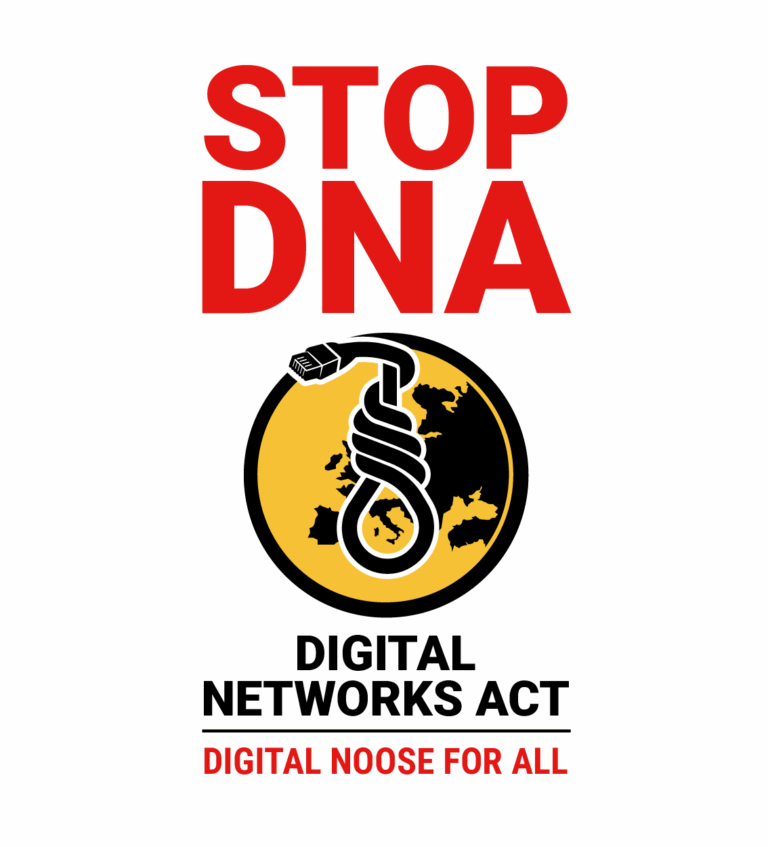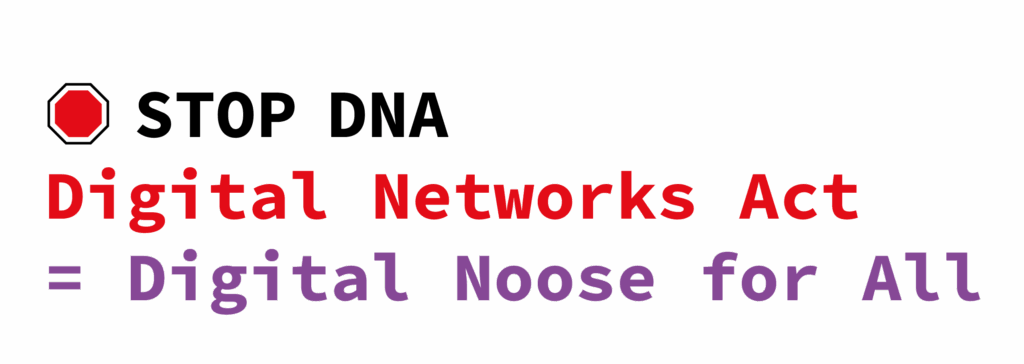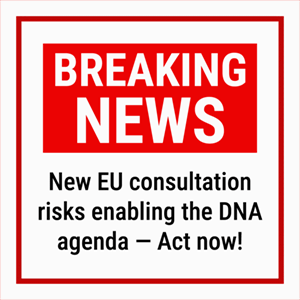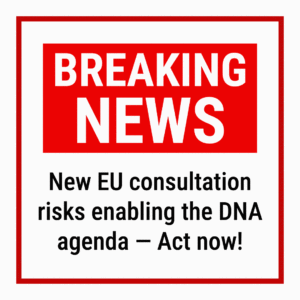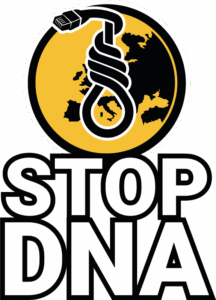Linkedin
Autore: Mike Blanche
The European Commission and telecoms industry lobby groups like ETNO/Connect Europe and the GSMA paint a grim picture of Europe’s digital future. They warn of an investment crisis, claiming Europe lags in digital infrastructure, and that the continent is “falling behind” other parts of the world. This doom and gloom narrative demands massive funding and major policy shifts in their favour.
The European Commission is currently holding a Call for Evidence for a future Digital Networks Act (closing this Friday night) that seeks to address these supposed failings. It makes a number of flawed proposals that will harm the Open Internet and slow Europe’s digitization. Three ideas in particular are presented in terms that sound anodyne and agreeable, but have the potential to be catastrophic for the Open Internet: the “level playing field”, “dispute settlement mechanisms for IP interconnection”, and “innovative services”.
1) in the name of a “level playing field”, that every network and service should be regulated like a telecoms operator
Prompted by discussions with large European incumbent telecom operators, the European Commission continues to explore the idea that there is “convergence” between traditional telecoms networks and modern cloud and Internet services. A key argument from these operators is that they say they cannot compete effectively with global Internet services without a “level playing field”, suggesting that all services should face similar regulatory frameworks as telecoms operators. Fundamentally, this ignores the fact that telecoms and Internet services are complementary, not competing, services.
Regular readers will be familiar with the concept of a “level playing field”, and the supposed unfairness facing large European telecoms operators, which has been a consistent theme from ETNO, their lobbying association, for well over a decade.
In its 2024 White Paper on digital infrastructure, the Commission introduced the concept of “3C” – “Connected Collaborative Computing.” This vision aimed to link connectivity and computing through intelligent orchestration, with “Telco Edge Clouds” closely integrated with 5G networks. This approach reflects a cloud strategy championed by vertically integrated telecoms operators, who seek to control the entire technology stack.
However, outside of this telco-led perspective, cloud services (and services delivered over the Internet more broadly) and telecoms networks largely remain distinct. The idea of a “level playing field” falls apart when considering telecoms operators and technology businesses have fundamentally different business models, and complement each other rather than compete. Building last-mile access networks, with their associated significant regulatory requirements, differs substantially from offering compute resources or higher-layer Internet services to users globally – each needs the other, but they do not compete. The relationship between cloud and telecoms is no more a convergence than the use of cloud by financial institutions implies a convergence between cloud and banking.
Furthermore, the definition of a “cloud” service itself is ambiguous. Does it encompass a cloud gaming platform, a national tax authority’s online filing system, or an image-sharing website like Imgur? Extending traditional telecoms regulation to a broad range of Internet services, or various types of private networks not currently regulated, could impose a vast and inappropriate regulatory burden on the digital ecosystem.
This discussion represents only one half of the “level playing field” argument. Beyond increasing regulatory obligations for the rest of the technology ecosystem, the other half of the Commission’s proposed solution is to reduce regulation on and empower European telecom operators with “increased scale through service provision and cross-border operation” – i.e. to allow them to merge to form European giants, in an industrial policy that appears to position telecoms operators as “Europe’s tech champions”. Such consolidation would lead to higher consumer prices and higher returns for telecoms investors (something the industry have been asking for for years), but the impact on innovation is less clear. The question remains whether century-old, often ex-state-owned infrastructure providers are best suited to compete with agile, innovative startups from around the world.
2) that IP interconnection needs “dispute resolution mechanisms”
There is a European digital success story that you are unlikely to have heard of. Telegeography’s “data gravity” analysis, measuring cities’ digital attractiveness by connectivity, data centres, and Internet Exchange Points, shows that Europe leads. It hosts three of the world’s four largest connectivity hubs: Frankfurt, London, and Amsterdam. Tokyo is the only other city in the top four. This success is driven by the low-friction, efficient IP interconnection market – a market so efficient that 99.998% of peering relationships are completed without any paperwork or contracts – this is possibly the most efficient market in the world.
Frankfurt exemplifies this global success. It is home to DE-CIX, one of the world’s largest Internet Exchange Points, enabling over 1,000 networks from around the world to interconnect with each other. Consider just those networks present starting with ‘B’: Baidu and ByteDance from China, Batelco from Bahrain, Bezeq from Israel, and Blizzard, the US gaming company. Europe’s strength lies in its diverse, interconnected network of data centres, Internet Exchange Points (IXPs), and fibre optic infrastructures. This system thrives on a competitive market that drives efficiency and innovation. Europe’s “digital gravity” attracts networks from across the globe seeking fast, reliable connections, with a virtuous circle of growth and further investment creating a global digital crossroads.
In contrast, the message from the European Commission, echoed by major European telecom operators, insists Europe’s digital infrastructure is weak and trails countries like China, South Korea, and the USA. It is worth noting that China and South Korea do not appear in Telegeography’s top 10 global connected cities, and the US’s three spots are, at least in part, reflective of history rather than the present.
As a result of this flawed narrative, the idea of funding an imaginary “investment gap” in last-mile broadband infrastructure through charging other parts of the Internet for IP interconnection has re-emerged once again. This is despite the concept of “network fees” having twice been rejected by the vast majority of stakeholders, in responses to previous proposals from the Commission in 2023 and 2024.
This time network fees takes the form of “dispute resolution mechanisms”, with the Commission proposing a “clarification” of the regulatory status of IP interconnection (i.e. increased regulation), including that telecom regulators could potentially mandate IP interconnection between networks, and the imposition of certain commercial terms. This idea was originally proposed by Telefonica in 2023 as part of the “fair share” push, and as explained in Axon’s 2022 report for large telecom operators, dispute resolution mechanisms are seen as a means to extract network fees from the rest of the Internet for delivering traffic demanded by their subscribers – effectively, telecoms operators getting paid twice for doing the same job.
Furthermore, the Commission suggests a concern that the “large majority of traffic transits through networks that are today unregulated”– these networks are highly competitive wholesale providers, and where there is a wide choice of providers, so there is no need for regulation.
In fact, the only point where choice is limited is in delivering traffic to end-users via their Internet Service Provider (ISP) – and some large European telecom operators are already leveraging this position to seek payment from other parts of the Internet.

This was highlighted in BEREC’s recent report on IP interconnection, which noted that apart from this issue of a few ISPs using their large user bases to seek payments, stated that they believed the IP interconnection market worked well, and did not call for wide-scale intervention.
There is also the potential for Content Delivery Networks (CDNs) to be regulated as telecom operators, as is already proposed by AGCOM, the Italian telecoms regulator. These platforms facilitate the delivery of user-demanded content by temporarily storing it as close as possible to the users, reducing costs for ISPs and improving performance for users. CDNs are not even “networks” in the telecoms sense, they are typically a set of servers distributed across the Internet that sit in multiple different physical networks, so it is unclear how they would fit into the telecoms regulatory framework.
As recently explored in a report for Plum Consulting, regulating IP interconnection or mandating “dispute resolution” will have significant negative effects for the entire Internet ecosystem. The only party to benefit is large ISPs, and then only in one specific scenario. It will harm the virtuous circle of investment that has made European cities some of the most connected on the planet, that has brought benefits to all, especially citizens and SMEs.
The Commission’s detailed questionnaire (for a select few stakeholders) on this topic uses carefully framed language that appears to guide respondents towards desired answers. It asks “would there be a benefit in proposing a harmonised approach at the EU level to the regulatory treatment of IP interconnection?” – and only if you agree with the EC’s position on harmonisation do you get to see the full scope of various regulatory interventions proposed.
The Commission also claims there are “little incentives for traffic optimization” creating energy consumption “inefficiencies” in delivering traffic demanded by users, implying that if such network fees were introduced this would improve efficiency. Vodafone have claimed the same in their proposal around the “Responsible Use of Networks”.
However, research from the Carbon Trust shows that a TV viewing device uses more than half of all the energy used in streaming video. The biggest effect on reducing energy consumption from data traffic would not come from charging the rest of the Internet for delivering content demanded by users, it would be to turn down the brightness on the TV. This suggests that focusing solely on network regulation overlooks other areas for efficiency gains.
The Plum report highlights that inappropriate regulation of IP interconnection would in fact decrease network efficiency, encouraging traffic to be exchanged further away from the user, due to regulatory distortions. In addition, Internet traffic growth is slowing rapidly – turning negative in some countries – due to developments in video optimisation techniques and users reaching the physical limits of possible “screen time” each day.
BEREC has already made clear they believe they have the power under the Open Internet Regulation to look at interconnection abuses (by large telecom operators), so, no “clarification” or “harmonization” is required from the Commission. Furthermore, discouraging network traffic will harm the Commission’s push towards greater uptake of fibre to the home and 5G services – why upgrade if you are not going to use it?
3) that telecoms operators should have more freedom to offer “innovative services”
“Innovative services” sounds innocuous enough – surely telecom operators should be innovating? This is, however, a euphemistic term for amending the Open Internet Regulation to allow traffic and content differentiation, treating different services differently, particularly over 5G.
This risks the Internet becoming “pay to play”, where certain services or content receive preferential treatment based on commercial agreements, not technical necessity. This entrenches incumbents (in both content and access) who can negotiate the best terms, stifles startups, and has the potential to reduce choice for users.
Buried in the EC’s questionnaire for certain stakeholders is the idea that IP interconnection dispute resolution could also support “opportunities” for cooperation on “QoS of end-to-end connections” – confirmation this is the old telecoms idea of differential quality of service, or fast lanes for certain services – and this exact wording was the other half of the “sending party pays” proposal that ETNO put forward for the ITU WCIT conference in 2012 (and was comprehensively rejected at the time). This approach puts telecoms operators in a gatekeeper position to decide what traffic gets what priority and at what price.
Ofcom, the UK regulator, analysed “innovative services” in their Network Neutrality review of 2023. They found that of 28 services UK operators claimed were unlaunched due to Open Internet rules, only four genuinely related to rule interpretation.
This suggests genuine innovation (rather than operator dreams of Internet gatekeeping) is not being stifled by current regulations.
In summary, empowering incumbent telcos, regulating cloud and other services across the Internet, introducing “dispute resolution” to the efficient IP interconnection market, and enabling “pay to play”, will hinder progress in the Digital Decade targets that are really lagging, negatively affecting every citizen and business in Europe.
The claim that Europe’s digital infrastructure is lacking is false and dangerous. The EC’s 2025 Digital Decade report, for example, ignores strong progress in fibre-to-the-home deployment across the continent, instead spotlighting Germany, one of the worst lagging countries, to justify policy changes. Similarly, the 2030 target for 5G is in the process of having its goalposts moved, because the original target is too close to being achieved.
In contrast, the Digital Decade targets that are truly falling behind relate to digital skills and the digitization of the economy, in particular for European SMEs – these groups need more affordable, more abundant access to new and innovative applications from across the world – not telco gatekeepers and expensive, throttled Internet access.
The European Commission is currently seeking feedback on its proposed Digital Networks Act – the deadline is this Friday, 11th July. While the aim may be to strengthen Europe’s digital future, the current approach risks destroying existing success. By potentially favoring a few large operators and imposing new charges and regulations that harm everyone else, the EC threatens to dismantle the elements that have led to the open digital ecosystem we have today. Such policies would lead to higher consumer costs, less choice, and ultimately, a weaker, less dynamic European digital environment.
The European Commission must listen to the broader Internet community: content providers (large and small, European and global), cloud operators (from inside and outside Europe), Europe’s own world-leading IXPs, and the countless businesses relying on Europe’s open digital environment. The Commission must be told, for the third time, to abandon policies that threaten this global success story. Instead, they should champion the Open Internet, frictionless interconnection, and competition that will truly enable Europe’s digital success.
